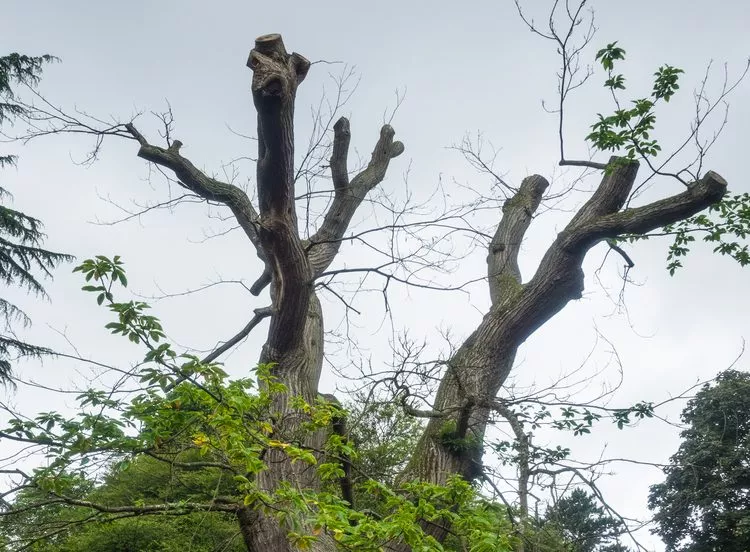- When is a cut required?
- How do I prune my chestnuts when planting?
- How can I make cutting easier for myself?
Some plants need to be pruned more, others less frequently and/or radically. The sweet chestnut belongs to the trees that should be pruned as little as possible. Some gardening experts even advise against it. However, the condition of your sweet chestnut is decisive.
 For large trees, a professional may need to be hired to do the pruning
For large trees, a professional may need to be hired to do the pruning
An important reason to refrain from any unnecessary cut is the dreaded chestnut bark canker. The fungus responsible for this can penetrate the tree through cuts or injuries in the bark. This canker has wiped out many trees but has now become "treatable".
Clean tools help pruned trees stay healthy. The cut should lead to a harmonious overall picture and remove dead and/or diseased branches, but also so-called water shoots.
When is a cut required?
The sweet chestnut does not need an annual cut, as you are probably familiar with from your fruit trees. Some trees can practically do without cutting. Occasionally, a sweet chestnut needs its first pruning when planting, which makes it easier for it to grow evenly. However, pruning is really important when pests and/or diseases occur.
How do I prune my chestnuts when planting?
If you bought your sweet chestnut in a container, then the plant does not need to be pruned immediately. The situation is different for a bare-root chestnut. Here the roots were cut back in the nursery before the sale. To ensure that the whole tree is well supplied with water and nutrients, you should shorten all shoots by about a third immediately after planting.
How can I make cutting easier for myself?
Pay attention to the growth of your sweet chestnut even with the young plant. The main trunk should be healthy and stable. If the chestnut grows in the desired direction right from the start, possibly supported by small corrections, then hardly any pruning is necessary. Only smaller branches should be thinned out from time to time. Only cut shoots that are less than five centimeters in diameter.
The essentials in brief:
- Cut back bare-root sweet chestnuts when planting
- otherwise cut as little as possible
- always use clean and sharp tools - caution: chestnut bark canker!
tips
Injuries and cuts can be entry points for pests and germs, so you should prune your chestnuts as little as possible.